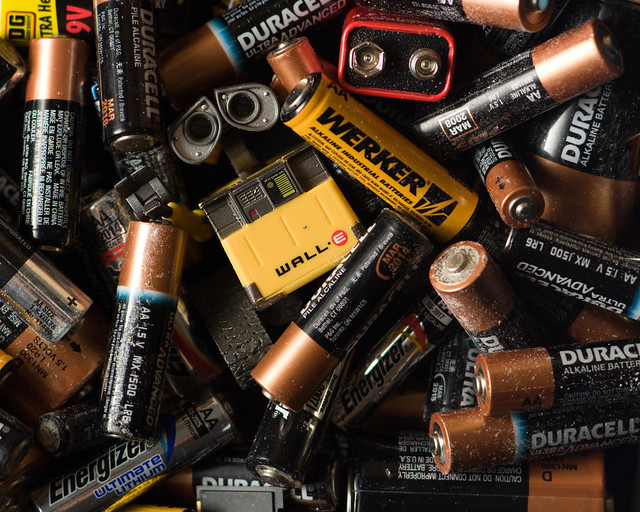Protected VS Unprotected Lithium Ion Battery
Nov 06, 2019 Pageview:4624
Lithium ion batteries are a great invention of 1970s. They are rechargeable batteries, mainly used for portable electronic devices and vehicles. These batteries revolutionize the electronic gadget and device world as these batteries enabled the manufacturer to store energy in compact and safe units. Nowadays most of the gadgets, heavy wireless machinery, vehicles are powered by lithium ion batteries. The lithium ion in batteries moves from negative electrode to the positive electrode through an electrolyte, while it is discharging and back to negative electrode when it is charging. These batteries are powerful and have high density energy, thus, can be harmful if they are damaged or charged incorrectly, as they contain flammable electrolyte. As a recent example, Samsung’s Galaxy Note 7 had lithium ion batteries that’s why caused fires and explosions, due to which they were called back.
Lithium ion batteries are energy capacity is defined in number of charge cycles. Charging capacity of lithium ion batteries can be affected by over-charging it for prolonged time, exposure of the battery to high temperatures, and fluctuating voltage.
Many companies and engineers are working on to increase the battery life and making these batteries more compact. Also, high emphasis on battery charging cycle and cost.
Definition of Protected and Unprotected Lithium Ion Battery
Protected Lithium Ion Battery
As mentioned earlier, lithium ion batteries are very powerful hence should be handled with caution and care. Protected lithium ion batteries come with small circuit integrated into the packaging of its cell. This small circuit prevents against dangerous and explosive fires. Basically, the circuit inserted in lithium ion batteries does not let it over charge itself, short circuit, over discharge and also controls temperature of the battery. Protected Li-ion batteries are much safer option for daily usage, especially around the house as it doesn’t cause explosions or fires.
A safe and well-designed protected lithium ion battery has following components:
1.Pressure vents – these batteries have small pressures vents. These vents relief the pressure of waste gas and prevents batteries from short circuit or inflation.
2.Short circuit prevention – it has a protection steel hat to prevent short circuit. The protection steel shell prevents any collision among batteries or any other impact that may be hazardous.
3.Multiple protection – protected batteries have three different types of protections that prevents over-heating. Furthermore, it protects against over-charging, and over-discharging.
Unprotected Lithium Ion Battery
Unprotected batteries, as the name itself suggests, do not have this small circuit installed in them which protects against hazards. The circuit is the main component that makes a battery protected. If it is missing, then the battery is unprotected and is prone to explosions or fire. However, unprotected lithium ion batteries do have enhanced capacity and more current capability as compared to a protected one. Unprotected batteries can heat up, over-charge or over-discharge.
Differences Between Protected and Unprotected Lithium Ion Battery
As the difference is evident from definitions above, unprotected battery is raw and has no monitoring circuit that protects against hazards, while protected batteries have circuit installed into the cell packaging which controls the batteries’ temperature and prevents inflations, over-heating, etc.
If we compare the cost, protected batteries are considered high quality, therefore, they are high in rates as compared to unprotected lithium ion batteries. Protected batteries have better longevity whereas unprotected batteries do not last long as they tend to over heat or over-charge and lose their functionality. Protected batteries are also safe when voltage is fluctuating. In case voltage is high, the protected battery disconnects itself and saves from any sort of damage. Furthermore, some protected batteries also ensure that they provide the rated current and nothing more or less than that. If the current is high, then the protected battery will just disconnect itself and will not get any damage.
Unprotected batteries do not have these functionalities. Lithium ion batteries have more power and if left unprotected they can cause damage. It is not recommended to use unprotected batteries around the house, especially around children, also, protected batteries should be used under strict supervision and with caution. Unprotected batteries are affordable and have more capacity as compared to protected batteries.
Application of Protected and Unprotected lithium ion battery
After the introduction of Lithium ions batteries, they become very successful due to their light weight and uses in several devices. Some of the uses of these batteries are in portable devices, power tools and electric vehicles.
Since protected batteries limit overcharging and safe from explosion and corrosion, some of the use of protected lithium ion battery are:
· Lithium Ion batteries are used in almost all telecommunication devices. Most of the modern mobile and smart phones use lithium ion protected batteries as they store energy in compact size.
· Laptops, tablets, digital cameras since these devices require batteries that have good longevity, most of these modern tech devices use Li-Ion batteries.
· Medical devices and flash lights as protected Li-ion batteries are safe for use
· Some of the power tools which require high energy also use Li-ion battery due to their safety and durability feature such as cordless drills, saws, hedge trimmers and many kinds of forestry equipment
· Electronics cigarettes also uses Li-ion batteries because its safety feature
· Many electric vehicles manufacturers also use lithium ion battery. Most famous electric cars manufacturer Tesla Motors uses Latium ion batteries in their super-efficient cars.
In more detailed and technical environment such as “Control Environment Vaults” and “Electronic Equipment Enclosures” Lithium ion batteries most be installed with EHS that is also known environment, health and safety to protect equipment and workers.
Unprotect lithium ion battery although can have more capacity to store energy but due to is hazardous outcomes such as overheating, fragility, explosion and unreliable charging capacity. Because of this Unprotected lithium ion batteries have been replaced by all the manufacturers.
With the advancing technology and updated tech devices, users prefer devices which are backed by good quality batteries which have high longevity, durability, economical and compact.
- Prev Article: Lithium-Ion Battery Power Station
- Next Article: Your Complete Guide to Recondition Li Ion Battery!
Leave Message
Hottest Categories
-
Hottest Industry News
-
Latest Industry News













